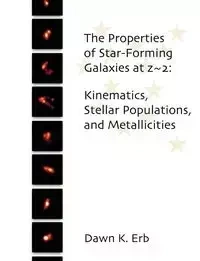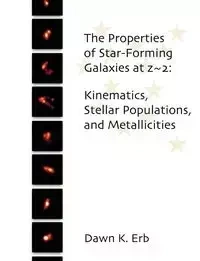The Properties of Star-Forming Galaxies at z~2 - Dawn Erb
The Properties of Star-Forming Galaxies at z~2 - Dawn Erb
- Kinematics, Stellar Populations, and Metallicities
AutorzyDawn Erb
EAN: 9781581122978
Symbol
985EWH03527KS
Rok wydania
2005
Elementy
172
Format
18.9x24.6cm
Język
angielski

Bez ryzyka
14 dni na łatwy zwrot

Szeroki asortyment
ponad milion pozycji

Niskie ceny i rabaty
nawet do 50% każdego dnia
Niepotwierdzona zakupem
Ocena: /5
Symbol
985EWH03527KS
Kod producenta
9781581122978
Rok wydania
2005
Elementy
172
Format
18.9x24.6cm
Język
angielski
Autorzy
Dawn Erb

We study the properties of star-forming galaxies at redshift z~2, an
era in which a substantial fraction of the stellar mass in the
universe formed. Using 114 near-IR spectra of the H-alpha and [N II]
emission lines and model spectral energy distributions fit to
rest-frame UV through IR photometry, we examine the galaxies' star
formation properties, dynamical masses and velocity dispersions,
spatially resolved kinematics, outflow properties, and metallicities
as a function of stellar mass and age. While the stellar masses of
the galaxies in our sample vary by a factor of ~500, dynamical masses
from H-alpha velocity dispersions and indirect estimates of gas masses
imply that the variation of stellar mass is due as much to the
evolution of the stellar population and the conversion of gas into
stars as to intrinsic differences in the total masses of the galaxies.
About 10% of the galaxies are apparently young starbursts with high
gas fractions, caught just as they have begun to convert large amounts
of gas into stars. Using the [N II]/H-alpha ratio of composite
spectra to estimate the average oxygen abundance, we find a monotonic
increase in metallicity with stellar mass. From the estimated gas
fractions, we conclude that the observed mass-metallicity relation is
primarily driven by the increase in metallicity as gas is converted to
stars. The picture that emerges is of galaxies with a broad range in
stellar population properties, from young galaxies with ages of a few
tens of Myr, stellar masses M~10^9 Msun, and metallicities Z~ 1/3
Zsun, to massive objects with M*~10^11 Msun, Z~Zsun, and ages as old
as the universe allows. All, however, are rapidly star-forming, power
galactic-scale outflows, and have masses in gas and stars of at least
~10^10 Msun, in keeping with their likely role as the progenitors of
elliptical galaxies seen today.
EAN: 9781581122978
EAN: 9781581122978
Niepotwierdzona zakupem
Ocena: /5
Zapytaj o produkt
Niepotwierdzona zakupem
Ocena: /5
Napisz swoją opinię

